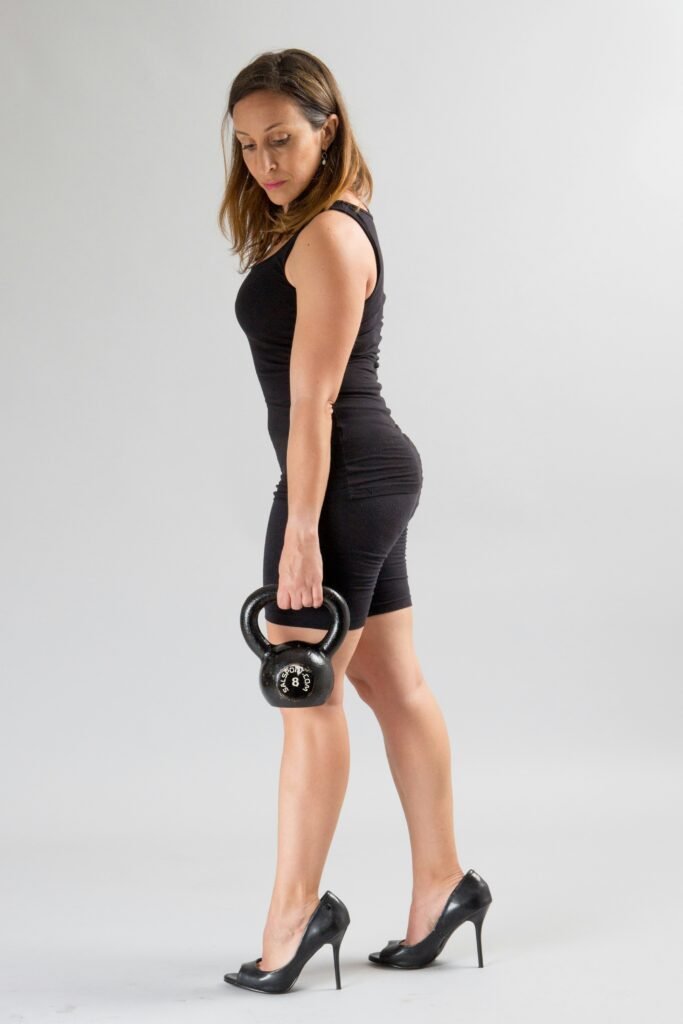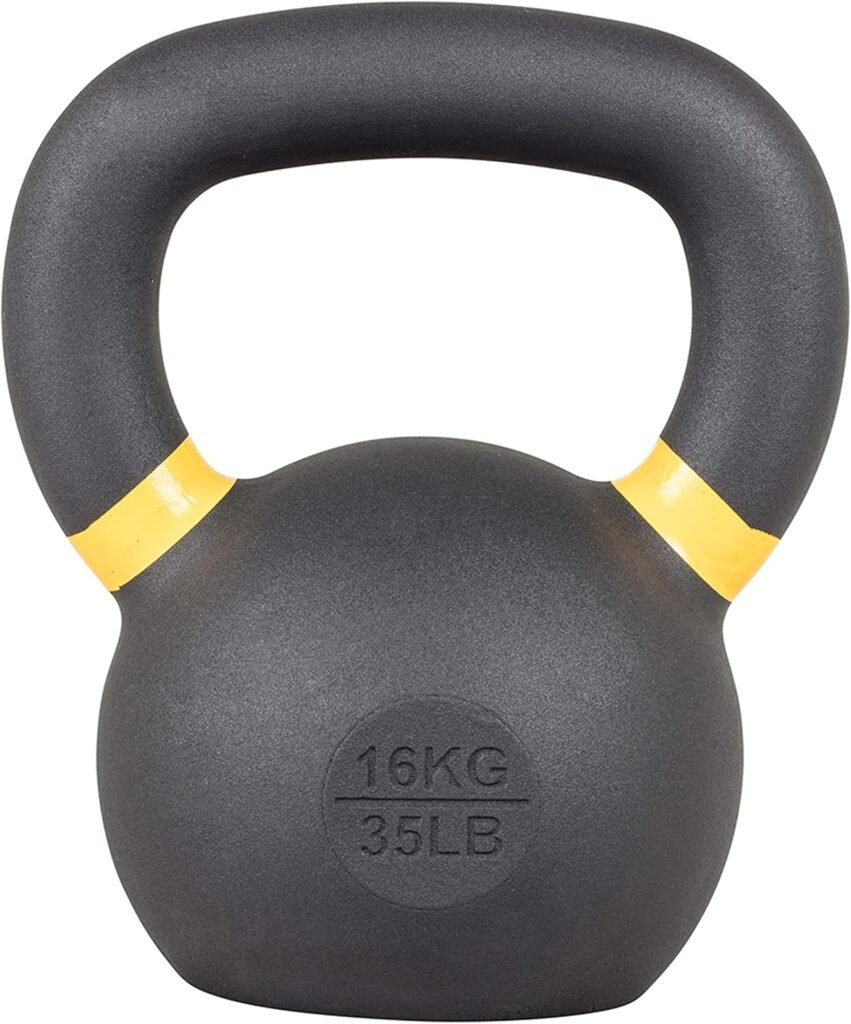Have you ever wondered how to effectively build your chest muscles using just a kettlebell? If so, you’re in the right place! Kettlebells are versatile tools that can add a new dimension to your workout routine. They not only target your chest but also engage your core, arms, and shoulders, making them a fantastic all-in-one option for strength training.
You are currently viewing a placeholder content from YouTube. To access the actual content, click the button below. Please note that doing so will share data with third-party providers.
Understanding the Kettlebell
Kettlebells are cast-iron or cast-steel weights that resemble a cannonball with a handle. They come in various sizes and weights, so you can choose one that best fits your fitness level. When using kettlebells, your body engages more stabilizing muscles compared to traditional weights, which can lead to improved strength, balance, and coordination. Knowing how your kettlebell works helps you maximize your workouts.
Benefits of Kettlebell Workouts
When it comes to chest exercises, kettlebells offer unique benefits. Here are some key advantages:
- Full-Body Engagement: Kettlebell exercises require multiple muscle groups, which leads to a more efficient workout.
- Improved Stability: The design of a kettlebell challenges your grip and stabilizing muscles, enhancing your overall strength.
- Variety: You can perform a wide range of exercises beyond just chest workouts, keeping your routine fresh and interesting.
- Functional Strength: Kettlebell training mimics movements you perform in everyday life, making you stronger in daily activities.
Key Safety Tips
Before jumping into kettlebell exercises, keep these safety tips in mind:
- Choose the Right Weight: Start with a manageable weight to master your form.
- Warm Up: Always warm up to prevent injuries. Incorporate dynamic stretches and movements to prepare your body.
- Maintain Proper Form: Focus on technique over the amount of weight lifted. This helps avoid strain and injuries.
- Listen to Your Body: If you feel discomfort (beyond normal workout fatigue), stop and reassess your form or the weight you’re using.

Chest Exercises with a Kettlebell
Let’s take a closer look at some effective kettlebell chest exercises you can incorporate into your routine. These exercises will target your pectoral muscles while also engaging your triceps and shoulders.
1. Kettlebell Floor Press
The kettlebell floor press is a great way to build strength in your chest while minimizing shoulder strain.
How to Perform It:
- Lie on your back on the floor with your knees bent and feet flat.
- Hold a kettlebell in each hand at chest level, palms facing your feet.
- Press the kettlebells straight up until your arms are fully extended.
- Lower the weights back to your chest, maintaining control throughout.
Tips:
- Ensure your elbows do not flare out excessively to protect your shoulders.
- Focus on keeping your core engaged throughout the movement.
2. Kettlebell Chest Press
This exercise mimics the traditional dumbbell chest press and effectively engages your chest muscles.
How to Perform It:
- Lie back on a bench or stability ball with a kettlebell in each hand.
- Hold the kettlebells above your chest with an overhand grip (palms facing each other).
- Lower the kettlebells to your chest while keeping your elbows at about a 45-degree angle.
- Press back up to the starting position.
Tips:
- Keep your feet flat on the floor to maintain stability.
- Control both the lowering and lifting phases of the exercise for maximum effectiveness.
3. Kettlebell Fly
The kettlebell fly is excellent for isolating your chest muscles and improving flexibility and range of motion.
How to Perform It:
- Lie on a flat bench or stability ball with a kettlebell in each hand.
- Extend your arms straight above your chest with a slight bend in your elbows.
- Slowly lower the kettlebells out to the sides until you feel a stretch in your chest.
- Bring the kettlebells back together above your chest.
Tips:
- Focus on a gentle stretch, avoiding any jerky movements.
- Maintain control and don’t let the weights pull you too far back.
4. Kettlebell Push-Up
This variation of the push-up adds an intense challenge and engages your core more than a standard push-up.
How to Perform It:
- Position two kettlebells on the floor shoulder-width apart.
- Grip the handles and get into a push-up position with your body in a straight line.
- Lower your body towards the floor by bending your elbows.
- Press back up to the starting position.
Tips:
- Keep your core tight to prevent sagging or arching your lower back.
- Adjust the kettlebell position based on your comfort level.
5. Kettlebell Pullover
The kettlebell pullover is unique because it allows you to work your chest along with your back muscles.
How to Perform It:
- Lie on a bench or the floor, holding one kettlebell with both hands above your chest.
- Keeping your arms slightly bent, lower the kettlebell behind your head until you feel a stretch in your chest and back.
- Pull the kettlebell back to your starting position.
Tips:
- Focus on a controlled movement to ensure safety.
- Engage your core to help protect your back during the exercise.
6. Kettlebell Single-Arm Chest Press
This exercise emphasizes stability and unilateral strength, which helps correct muscle imbalances.
How to Perform It:
- Lie on a flat bench with one kettlebell held in one hand at your chest level.
- Press the kettlebell upward with one arm until fully extended.
- Lower it back to your chest and repeat. Switch arms after completing your reps.
Tips:
- Keep your non-working arm at your side to maintain stability.
- Focus on slow and controlled movements for better muscle engagement.
Sample Workout Routine
To help you integrate these exercises into your routine, here’s a simple kettlebell workout focused on your chest. Aim for 3 sets of 8-12 reps each exercise.
| Exercise | Sets | Reps |
|---|---|---|
| Kettlebell Floor Press | 3 | 8-12 |
| Kettlebell Chest Press | 3 | 8-12 |
| Kettlebell Fly | 3 | 8-12 |
| Kettlebell Push-Up | 3 | 6-10 |
| Kettlebell Pullover | 3 | 8-12 |
| Kettlebell Single-Arm Press | 3 | 8-12 each arm |
Cool Down and Stretching
After completing your workout, it’s vital to cool down properly. Take a few minutes to stretch the chest and upper body to enhance flexibility and reduce muscle soreness.
- Chest Stretch: Stand in a doorway with your arms at 90 degrees against the frame. Lean forward gently, feeling the stretch in your chest.
- Triceps Stretch: Raise one arm overhead and bend the elbow, reaching your hand down your back. Use the other hand to gently pull the elbow backing.

Progressing Your Kettlebell Workouts
As with any fitness program, progression is important. Here are some ways to add challenge as you get comfortable with your routine:
Add Weight
Once the exercises become easy, consider increasing the weight of the kettlebell. Gradually work your way up to heavier weights to continue building strength.
Increase Reps and Sets
Challenge yourself by increasing the number of repetitions per set or adding additional sets. This will help keep your workouts challenging and encouraging muscle growth.
Incorporate Supersets
Supersets involve performing two exercises back-to-back without resting in between. For example, you might pair the kettlebell floor press with the kettlebell fly. This technique enhances both endurance and strength.
The Importance of Nutrition
While exercise is essential for building muscle, nutrition also plays a vital role in muscle recovery and growth. Here are some tips to consider:
- Protein Intake: Ensure you’re consuming enough protein to repair your muscles after workouts.
- Hydration: Stay hydrated throughout the day, especially before and after your workouts.
- Balanced Diet: Incorporate a variety of foods in your diet, including fruits, vegetables, and whole grains, for overall health.
Recovery
Giving your body time to recover is crucial. Aim for at least one to two rest days each week, or you can alternate between heavy and light workout days to prevent overtraining.

Conclusion
Incorporating kettlebell exercises into your chest workout routine can be an enjoyable and effective way to build strength and improve your overall fitness. By utilizing a range of exercises, focusing on form and technique, and paying attention to your nutrition and recovery, you’ll be well on your way to achieving your fitness goals.
Whether you’re just starting to lift kettlebells or are looking to spice up your current routine, these exercises will undoubtedly help you make incredible strides with your chest training. So, grab your kettlebell, and get ready to work those chest muscles!






